GCIT Explores New Collaboration Opportunities with Top Australian Universities
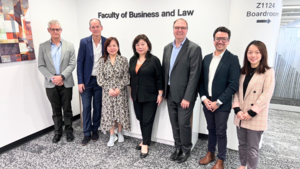
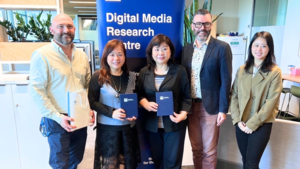
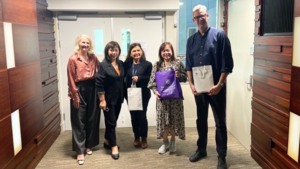
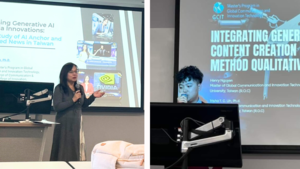
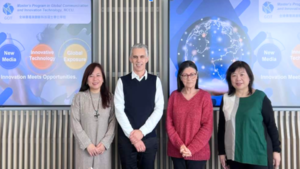
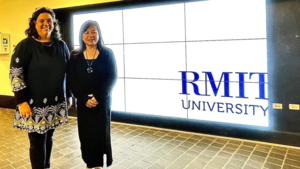
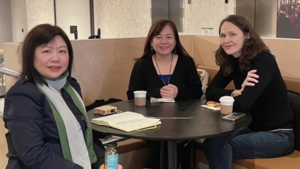

Date :
2024-07-10
Department :
Master’s Program in Global Communication and Innovation Technology
【Article by Master’s Program in Global Communication and Innovation Technology】
The Master's Program in Global Communication and Innovation Technology (GCIT) at National Chengchi University (NCCU) embarked on an academic exchange trip to Australia following the 2024 International Communication Association (ICA) Annual Conference. Led by Professor Trisha Lin, the Director of GCIT, and supported by former Director Professor Mei-Ling Hsu, the delegation visited six top Australian universities from June 24 for a week, including Queensland University of Technology (QUT), University of Queensland (UQ), University of New South Wales (UNSW), University of Technology Sydney (UTS), Royal Melbourne Institute of Technology (RMIT), and Monash University. The visit aimed to promote the GCIT’s interdisciplinary international communication innovation master’s program and explore future transnational teaching and research collaboration models. The team met numerous outstanding Australian scholars and teams in the field of communication, resulting in fruitful outcomes.
At the ICA conference, Professor Lin presented two papers on deepfake technology and social bots, demonstrating the strength of research in emerging communication technologies. As the Vice President of the Chinese Communication Association (CCA), she not only organized CCA research paper sessions but also helped host a reception sponsored by Peking University, Huazhong University of Science and Technology, and Shanghai University. The reception attracted over 400 participants, providing a platform for networking within the global Chinese communication community. Professor Lin stated that the trip accomplished both academic presentations and international exchanges, enhancing GCIT's global visibility and creating unprecedented opportunities for collaboration with top Australian universities. This will offer new overseas learning opportunities for students and invite excellent visiting scholars to NCCU, fostering the development of outstanding international communication talents.
The first stop was at Queensland University of Technology (QUT). The GCIT team discussed the feasibility of MarTech international course cooperation with Professor Cameron Newton, Deputy Dean of the Business and Law Faculty, Associate Professor Shane Mathews (School of Advertising, Marketing, and Public Relations), and Professor Andrew Paltridge (School of Economics and Finance). They also toured the Bloomberg Lab. The next day, the team visited Australia's top-ranked communication school, QUT’s School of Communication, where Professor Kevin Sanson, the School's Dean, and Daniel Angus, Director of the Digital Media Research Centre (DMRC), introduced their key projects. Both sides found common ground in interdisciplinary, technological innovation, and industry-academia collaboration, planning to start further academic cooperation through scholar visits and summer schools. Professor Lin, who visited QUT in 2018, was impressed by the high-level reception and QUT's innovative performance.
On June 25, the GCIT team visited the Faculty of Humanities and Social Sciences at the University of Queensland, meeting with Dr. Elena Block and Dr. Richard Murray, who are responsible for departmental development, to discuss the feasibility of international course cooperation. Dr. Block saw complementary strengths between GCIT’s focus on digital media and technology and their curriculum, expressing a strong interest in cooperation. Professor Murray, a former war correspondent, showed interest in international journalism, one of GCIT's core areas, and welcomed GCIT students for exchange, internships, and study at UQ. During the pleasant discussions, they enthusiastically guided the GCIT team around the beautiful riverside campus.
In Sydney, the main focus was participating in the International Symposium of AI and the Future of Screen Industry hosted by the University of New South Wales (UNSW) Faculty of Arts and Media. On June 28, Professor Lin and her GCIT students presented two papers on “Generative AI Anchors” and “Teaching Generative AI Content Production,” showcasing GCIT’s AI research achievements. They also exchanged ideas with scholars from Hong Kong, Shanghai Jiao Tong University, and Tsinghua University. After the symposium, Professor Lin introduced the GCIT program to Associate Professor Elaine Zhao, the symposium organizer, discussed the course structure of UNSW, and explored potential future cooperation.
During a brief visit to the University of Technology Sydney (UTS), Professor Lin exchanged ideas with Professor Derek Wilding from the Faculty of Law and Professor Monica Attard from the Centre for Media Transition, discussing possible integration of media practice courses or internship programs. She also introduced the program features and short-term course collaboration needs to their international office and toured the modern campus, which closely integrates with the community.
The last stop in Melbourne included a campus tour led by Senior Lecturer Jenny A. Robinson at RMIT, showcasing traditional and modern facilities, recording studios, photography studios, and the fact-checking center. The short-term courses at RMIT, closely linked with industry, are well-suited for GCIT students' overseas learning. The GCIT team also discussed digital media international cooperation with Haiqin Yu, the project leader at the Digital Ethnography Research Centre, and explored future short-term exchange methods for students. Finally, they met with Professor Sarah Pink, Director of the Emerging Media Lab at Monash University. Professor Pink, a renowned digital anthropologist, and award-winning documentary director, conducts inspiring research using mixed methods. Given her research interests align with Professor Lin’s, both sides look forward to more academic exchanges and research collaborations in the future.
The Master's Program in Global Communication and Innovation Technology (GCIT) at National Chengchi University (NCCU) embarked on an academic exchange trip to Australia following the 2024 International Communication Association (ICA) Annual Conference. Led by Professor Trisha Lin, the Director of GCIT, and supported by former Director Professor Mei-Ling Hsu, the delegation visited six top Australian universities from June 24 for a week, including Queensland University of Technology (QUT), University of Queensland (UQ), University of New South Wales (UNSW), University of Technology Sydney (UTS), Royal Melbourne Institute of Technology (RMIT), and Monash University. The visit aimed to promote the GCIT’s interdisciplinary international communication innovation master’s program and explore future transnational teaching and research collaboration models. The team met numerous outstanding Australian scholars and teams in the field of communication, resulting in fruitful outcomes.
At the ICA conference, Professor Lin presented two papers on deepfake technology and social bots, demonstrating the strength of research in emerging communication technologies. As the Vice President of the Chinese Communication Association (CCA), she not only organized CCA research paper sessions but also helped host a reception sponsored by Peking University, Huazhong University of Science and Technology, and Shanghai University. The reception attracted over 400 participants, providing a platform for networking within the global Chinese communication community. Professor Lin stated that the trip accomplished both academic presentations and international exchanges, enhancing GCIT's global visibility and creating unprecedented opportunities for collaboration with top Australian universities. This will offer new overseas learning opportunities for students and invite excellent visiting scholars to NCCU, fostering the development of outstanding international communication talents.
The first stop was at Queensland University of Technology (QUT). The GCIT team discussed the feasibility of MarTech international course cooperation with Professor Cameron Newton, Deputy Dean of the Business and Law Faculty, Associate Professor Shane Mathews (School of Advertising, Marketing, and Public Relations), and Professor Andrew Paltridge (School of Economics and Finance). They also toured the Bloomberg Lab. The next day, the team visited Australia's top-ranked communication school, QUT’s School of Communication, where Professor Kevin Sanson, the School's Dean, and Daniel Angus, Director of the Digital Media Research Centre (DMRC), introduced their key projects. Both sides found common ground in interdisciplinary, technological innovation, and industry-academia collaboration, planning to start further academic cooperation through scholar visits and summer schools. Professor Lin, who visited QUT in 2018, was impressed by the high-level reception and QUT's innovative performance.
On June 25, the GCIT team visited the Faculty of Humanities and Social Sciences at the University of Queensland, meeting with Dr. Elena Block and Dr. Richard Murray, who are responsible for departmental development, to discuss the feasibility of international course cooperation. Dr. Block saw complementary strengths between GCIT’s focus on digital media and technology and their curriculum, expressing a strong interest in cooperation. Professor Murray, a former war correspondent, showed interest in international journalism, one of GCIT's core areas, and welcomed GCIT students for exchange, internships, and study at UQ. During the pleasant discussions, they enthusiastically guided the GCIT team around the beautiful riverside campus.
In Sydney, the main focus was participating in the International Symposium of AI and the Future of Screen Industry hosted by the University of New South Wales (UNSW) Faculty of Arts and Media. On June 28, Professor Lin and her GCIT students presented two papers on “Generative AI Anchors” and “Teaching Generative AI Content Production,” showcasing GCIT’s AI research achievements. They also exchanged ideas with scholars from Hong Kong, Shanghai Jiao Tong University, and Tsinghua University. After the symposium, Professor Lin introduced the GCIT program to Associate Professor Elaine Zhao, the symposium organizer, discussed the course structure of UNSW, and explored potential future cooperation.
During a brief visit to the University of Technology Sydney (UTS), Professor Lin exchanged ideas with Professor Derek Wilding from the Faculty of Law and Professor Monica Attard from the Centre for Media Transition, discussing possible integration of media practice courses or internship programs. She also introduced the program features and short-term course collaboration needs to their international office and toured the modern campus, which closely integrates with the community.
The last stop in Melbourne included a campus tour led by Senior Lecturer Jenny A. Robinson at RMIT, showcasing traditional and modern facilities, recording studios, photography studios, and the fact-checking center. The short-term courses at RMIT, closely linked with industry, are well-suited for GCIT students' overseas learning. The GCIT team also discussed digital media international cooperation with Haiqin Yu, the project leader at the Digital Ethnography Research Centre, and explored future short-term exchange methods for students. Finally, they met with Professor Sarah Pink, Director of the Emerging Media Lab at Monash University. Professor Pink, a renowned digital anthropologist, and award-winning documentary director, conducts inspiring research using mixed methods. Given her research interests align with Professor Lin’s, both sides look forward to more academic exchanges and research collaborations in the future.


 Fax:886-2-29379611
Fax:886-2-29379611